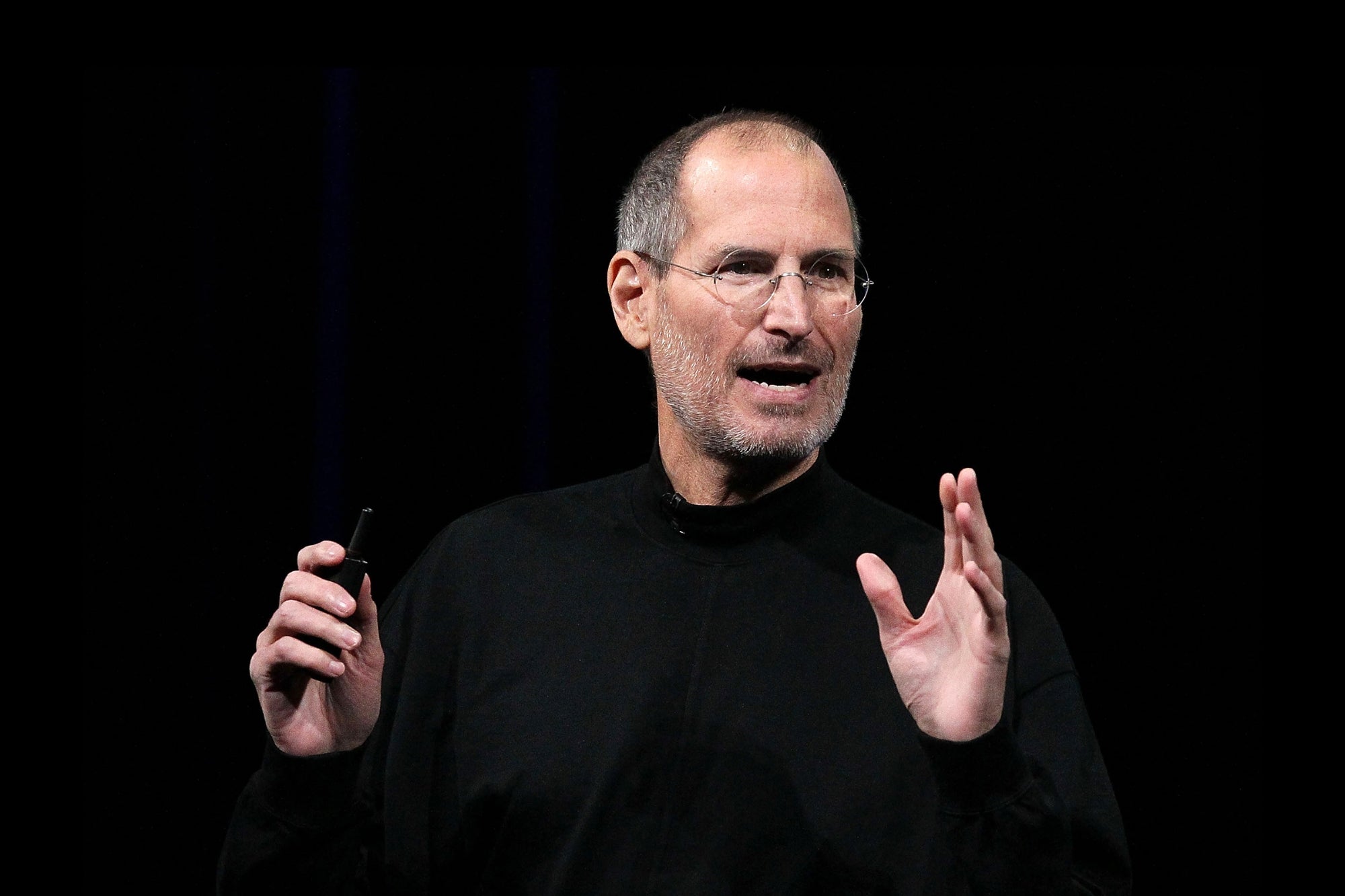How Steve Jobs' #1 Design Principle Can Transform Your Daily Life Steve Jobs believed in simplicity. It's more powerful than you may think.
By Greg McKeown Edited by Jason Feifer
Opinions expressed by Entrepreneur contributors are their own.

When a team of Apple's best product designers met with Steve Jobs to present their design for what eventually became the iDVD—a now-defunct application that allowed users to burn music, movies, and digital photo files stored on their computers onto a physical DVD—they expected their boss to be wowed. It was a beautiful, clean design, and while it had a number of features and functions, they were proud of how they had streamlined the original version of the product, which had required a thousand-page user manual.
But as the team soon learned, Jobs had something else in mind. He walked to the whiteboard and drew a rectangle. Then he said, "Here's the new application. It's got one window. You drag your video into the window. Then you click the button that says BURN. That's it. That's what we're going to make."
For entrepreneurs, simplicity is king. We strive to design products that are simple to use, services that are simple to access, web sites and apps that are simple to navigate, and so on. When it comes to the end product or customer experience, we've elevated simplicity to an art form.
So why is so much of what we do on a daily basis still riddled with so much complexity?
We've become so accustomed to the complexity of all the processes in our lives, we barely even notice it.. Worse, we unwittingly create it: faced with what should be simple problems, we seek out more complex solutions to address them. Then, frustrated by the complexity of those solutions, we look for new ways to make that complex problem easy again.
As this vicious cycle continues, we add layer upon layer of complexity.
This is especially true when trying to scale an organization, which inevitably leads to an expansion of complexity everywhere. Processes grow cumbersome. Coordination on and across teams takes more time and effort. Work that used to be simple suddenly becomes maddeningly, unnecessarily, complicated.
But once we remove the unnecessary layers of complexity, the priority tasks that once seemed so overwhelmingly hard suddenly feel doable. This is true for virtually everything, from designing and launching a new product, to entering a new market, to leading a fast-growing team.
In my first book, I argued that identifying what is essential requires a system of ruthless prioritization. But as I write in my new book, Effortless, in order to actually get those essential things done, ruthless simplification is required. Here are a few tips:
Start with Zero
Last year, I launched a podcast. Originally, the instructions I was supposed to send to each guest who joined me on the podcast consisted of fifteen steps. They were overwhelming for me even to read, never mind for guests to actually follow and do.
So I started from zero, and asked myself, "What is the minimum number of steps someone could take to chat with me via this software?" Once I had my answer, I reduced the process to two simple steps.
When faced with an immensely complicated process or project, our instinct is to try to pare it down. But what if we came at it from the opposite angle, and started with a blank slate instead?
You'd be surprised how many seemingly complex goals can be obtained, and how many seemingly complex tasks can be completed, in just a few steps. So start at zero, and determine the minimum number of steps from there.
Lose the bells and whistles
In a tiny but pivotal moment in IBM's legendary turnaround, then-CEO Lou Gerstner invited Nick Donofrio, one of his executive leaders, to speak at a state-of-the-company meeting. At that time, the standard format of any important IBM presentation involved overhead projectors and graphics on transparencies that IBMers called "foils.'
As Gerstner recalls, "Nick was on his second foil when I stepped to the table and, as politely as I could in front of his team, switched off the projector. After a long moment of awkward silence, I simply said, "Let's just talk about your business.' "
That's what the goal for most presentations is supposed to be: to "just talk about your business." So the next time you have to create a pitch deck, present sales figures, or give a progress report, resist the temptation to add extra bells and whistles. They aren't just a distraction for you; they're also a distraction for your audience. That's why, when I do presentations, I use six slides, with fewer than ten words total.
You may have already eliminated the unnecessary features in your product itself. Now do the same for your processes, your presentations, and everything else.
Maximize the steps not taken
Too often, we try to simplify our processes by simplifying the individual steps. But what if we simply removed them instead?
Unnecessary steps are just that: unnecessary. Eliminating them allows you to channel all your energy toward getting the important project done. In just about every realm, completion is infinitely better than superfluous steps that don't add value.
One of the twelve principles of the Agile Manifesto states, "Simplicity—the art of maximizing the amount of work not done—is essential." By this they mean that the goal is to create value for the customer, and if this can be done with less code and fewer features, that is exactly what ought to be done.
While this refers to the process of software development, we can adapt it to any everyday process. Regardless of what your ultimate goal is, remember: the simplest steps are the ones you don't take.
This post is adapted from Greg McKeown's book Effortless: Make It Easier to Do What Matters Most (Penguin Random House)











